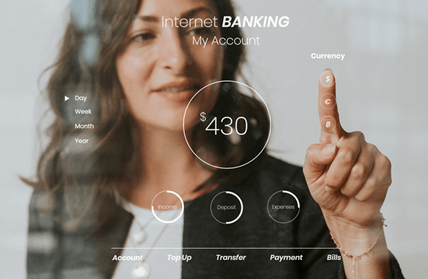Marketplaces for Banks: How They Work and Why We Need Them
When discussing a banking marketplace, we refer to platforms on which a financial institution offers own or third-party products. This offering can range from insurance in the most traditional cases to cars, real estate options, tour packages, and even electronic devices for personal use.
Marketplaces are undoubtedly an innovative strategy, but we cannot ignore that, from the outset, we are talking about a plan for many. It pushes banks outside their comfort zone.
The challenges are clear. A common concern is that financial institutions lack experience in e-commerce, such as product delivery logistics. It could also be thought that having a space to offer third-party products and services exposes banks to reputational risk if something were to go wrong.
The truth is that, while several aspects must be considered when approaching a marketplace strategy, the advantages of having an ecosystem in which the bank’s services coexist directly with diverse types of products is based on one of the critical strengths banks have when interacting with customers.
Data Analysis: The Ace up the Sleeve of Banking Marketplaces
Generally, banking is a facilitator of the crucial moments of our lives. When we decide to study, get married, or buy a home or our first vehicle, we turn to financial services.
Financial institutions have a large amount of data at their disposal, which, if analyzed with the proper tools, allows them to get to know their customers in-depth. As a result, banks can reach their users at the right time and offer them precisely what they need.
That same data analysis is at the base of the creation of marketplaces. Suppose we know that customers in a specific age range and with a certain income will be interested in buying a car or a home. Why not provide them with a platform where they can find these products complemented by financial services that make it easier to buy them?
For customers, the benefit of this strategy is clear: They find in one place a personalized offer of products accompanied by financial services also tailored to their needs. But the advantages do not end there.
Suppliers that partner with a bank to offer their products on the marketplace and are often its customers gain access to an audience ready to buy without making significant investments in marketing.
An example of the above is the ICBC (Industrial and Commercial Bank of China) mall, which allows Argentine exporters to have a commercial window for their products in Asia. As we will see, this is just one of the multiple approaches to designing a banking marketplace.
There is a marketplace for each type of bank
The other side of ICBC’s strategy can be noted in its marketplace, which is aimed not at companies but the Argentine public. Bank customers can exchange points for products but also make direct purchases. The offer, in this case, revolves around Chinese manufacturers, with a clear emphasis on technological developments.
How each financial institution understands its strengths and imagines its future decides the type of marketplace it will make available to its customers.
At this point, evaluating the references in the retail world is essential. For example, the Chinese platform Alibaba focuses on a B2B (business to business) model; Amazon works by connecting directly with customers (B2C), and media such as e-Bay serve as a bridge between users (P2P).
Regardless of the path chosen to create a marketplace, one must never lose sight of the fact that these platforms are designed to complement the bank’s offer. The center of all their efforts must be supplying excellent customer experiences.
Whatever their approach, marketplaces must be based on data analysis. From the beginning, they must be designed with tools that allow them to improve based on user feedback continuously.
Are you looking for a partner to enhance user experience through data analytics?
At Pragma, we have years of experience working with companies at various levels of analytics maturity, and our teams of data professionals are ready to get down to business
Share this
You May Also Like
These Related Stories

Digital Ecosystems: Why Are They the Future of Banking?

Service Personalization for Small Banks: Five Key Benefits

US Open Banking Outlook: Adoption, Benefits & Implications
Subscribe to
Pragma Blog
You will receive a monthly selection of our content on Digital Transformation.

